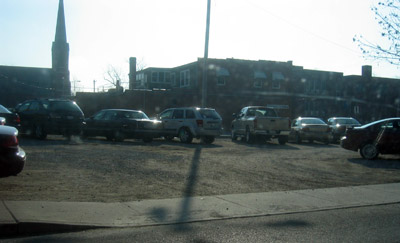I was re-reading Bradley’s original 1991 institutional plan. At that time, they had a committee that consisted of two representatives each from Bradley University, the Arbor District (then called “Bradley West”), Moss-Bradley, and the Uplands, plus the president of the West Bluff Council. How did this work? Here’s how they explained it:
II. The Process
At the onset, the Committee agreed to:
- A. Review Neighborhood/University issues
- B. Identify those issues which could be addressed via the institutional plan
- C. Openly discuss the issues with the pupose of seeking meaningful and long-term solutions
To accomplish its objective, the Committee also agreed that the process should initially involve only committee members. This approach was thought best because open dialogue could occur and sensitive issues could be discussed. Further, matters of a confidential nature (particularly dealing with property) could be addressed and considered as necessary. It was the Committee’s consensus that issues would best be initially addressed through Committee discussions rather than through the media. Upon identifying its best preliminary plan, the Committee agreed to then present it to the Neighborhoods for comment and input. Subsequently, the Committee’s timetable called for presentation of the plan to the West Bluff Council and, finally, through the process established by the City of Peoria.
Sounds like a pretty good plan, doesn’t it? I mean, it appears to solve the problem of property acquisition issues while still keeping the neighborhoods informed through their representatives. It’s an inspired plan, in my opinion. So, why didn’t the university follow it when acquiring homes on Maplewood?
At the zoning commission hearing, Vice President Gary Anna explained that the university “agonized” over this issue, but they decided to buy the houses the way they did (surreptitiously) because (a) the properties were vital to the university’s plan, and (b) if they had made their intentions known ahead of time, they probably wouldn’t have been able to afford to buy the properties and their plan would have been kaput.
Working with the neighborhoods might have ruined their plan, so they had to make a choice: do we take that chance and try to work with the neighborhoods anyway like a good neighbor, or do we pursue our plan secretly and unilaterally? Bradley chose the latter, and is not ashamed to defend their “ends-justify-the-means” method in front of the zoning commission.
The Gravel Lot

To give further insight into Bradley’s method of doing business, there’s a gravel parking lot at the corner of Bradley Avenue and Duryea Place that was supposed to be sealcoated in 1992 to provide a dustless surface, and then paved in 1994. Here it is 15 years later and the parking lot is still gravel and dusty.
What was Mr. Anna’s response to this? Take a listen for yourself:
[audio:http://www.peoriachronicle.com/wp-content/uploads/Audio/ZC.mp3]I know it’s a little scratchy — the city needs a better recording system. He starts out saying he’s going to respond to Commissioner Klise’s observation about the gravel lot and he admits that it should have been improved long ago because that’s what they agreed to back in 1991. Then he says:
We did pay a penalty for not doing that at one point in time. It was assessed by the city, and, as you can imagine, it was relatively inconsequential compared to what the cost of improving it would be.
It was cheaper to pay the fine than to do the work they agreed to do. So the lot remains unimproved to this day as a monument to their broken promise, their commitment to pragmatism over integrity. This is yet another example of how they have no qualms about breaking the rules when it suits their plan or their desires.
Conclusion?
How can neighborhood associations not look upon this institution with suspicion in light of these actions? What basis is there for trust? There is none. All you can do is hope to high heaven that your needs fit into their plans, because if they don’t, your neighborhood plans and needs are the ones that will get thrown away like so much rubbish.
Does Bradley do good things? Yes. Are they a good school? I think so. Does that mean that we should just approve their new plan and blindly trust that they will honor it any more than their old plan? No.
Once again, Bradley is making overtures to their neighbors, having meetings and portraying the image of an institution willing to collaborate with surrounding residents. But it’s clear from their past actions that this renewed interest will only last as long as it’s convenient for them. And at any rate, their parking deck — the most egregious part of their plan — is not negotiable.
What can be done to protect neighborhoods? At the very least, the city should set a very, very consequential fine for the slightest deviation from Bradley’s new plan, since “inconsequential” fines are meaningless. And if they ever have to pay that fine, it should be divvied up among the adjacent neighborhood associations.
Ideally, they shouldn’t even have their new plan approved, and should be forced to find a more reasonable plan — one that has more suitable segue from institutional to residential zoning than a five-story parking deck. Approving their plans with no modification basically gives the city’s blessing on their underhanded tactics and sends another message that older neighborhoods are not important to the city — not important enough to protect from wanton, unilateral encroachment, anyway.
If pressed, I’m sure Bradley is creative enough to come up with an alternative that will satisfy the needs of the university and the neighborhood. The question is, will they be pressed?
